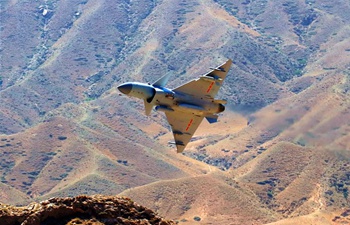WASHINGTON, April 18 (Xinhua) -- The U.S. space agency NASA's next planet-hunting spacecraft was lifted off on Wednesday at Cape Canaveral Air Force Station in Florida.
At 18:51 local time (2251 GMT), the Transiting Exoplanet Survey Satellite, or TESS, started its journey into space aboard a Falcon 9 rocket.
The first stage of the reusable Falcon 9 landed on the "Of Course I Still Love You" droneship at about 19:02 (2302) and then the second-stage engine was cut off, making the satellite now in coast phase.
TESS will be deployed into a highly elliptical orbit approximately 49 minutes after launch.
TESS is the second spacecraft after Kepler Space Telescope which was launched in 2009, in the search for planets outside our solar system, including those that could support life.
The mission is expected to find exoplanets that periodically block part of the light from their host stars, events called transits.
The spacecraft will survey 200,000 of the brightest stars near the sun to search for transiting exoplanets. Those stars TESS will study are 30 to 100 times brighter than those the Kepler mission and K2 follow-up surveyed, enabling far easier follow-up observations with both ground-based and space-based telescopes.
It will survey the entire sky over the course of two years by breaking it up into 26 different sectors, each 24 degrees by 96 degrees across, according to NASA.
The cameras on the spacecraft will stare at each sector for at least 27 days, looking at the brightest stars at a two-minute cadence, NASA said.
TESS scientists expect the mission will catalog thousands of planet candidates and vastly increase the current number of known exoplanets.
Of these, approximately 300 are expected to be Earth-sized and super-Earth-sized exoplanets, which are worlds no larger than twice the size of Earth.?

















